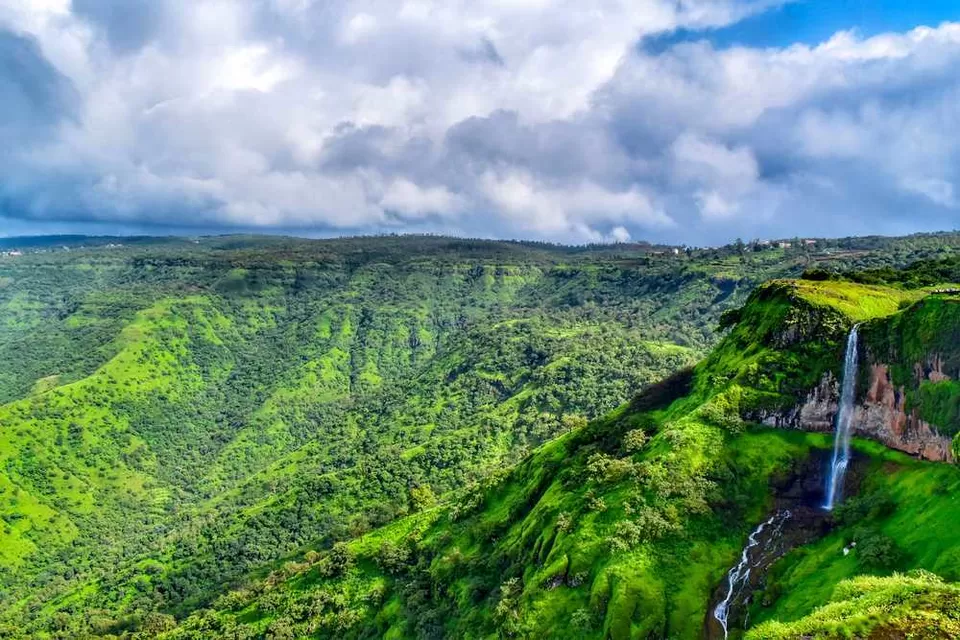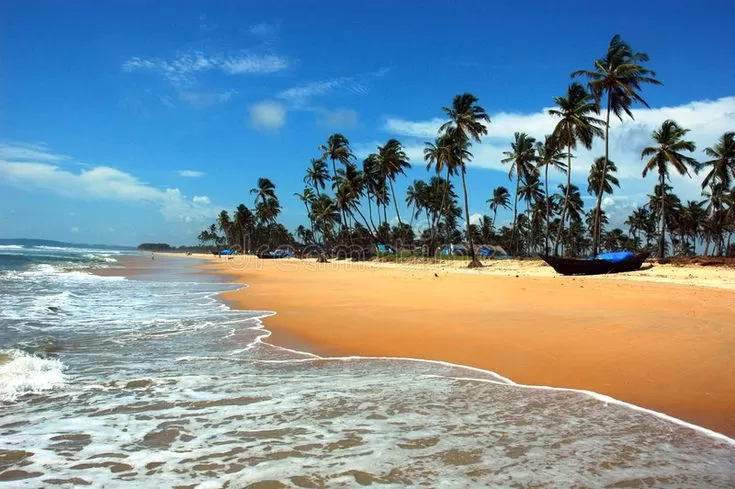Jejuri is a city and a pilgrimage site in the Pune district of Maharashtra, India. It is famous for its Khandoba Temple, which is dedicated to Lord Khandoba, a form of Lord Shiva. Jejuri is also known for its turmeric festival, where devotees shower each other with turmeric powder.
Jejuri is a destination for tourism, pilgrimage, and culture, as it offers a variety of attractions, history, significance, festivals, and photos. In this article, we will provide a comprehensive travel guide for Jejuri and Khandoba Temple, covering everything you need to know before you plan your trip.
Khandoba Temple: The Heart of Jejuri
Khandoba Temple is the main attraction of Jejuri, as it is one of the most important temples in Maharashtra and India. The temple is located on a hilltop, overlooking the city and the Karha River. The temple complex consists of several shrines, gates, statues, towers, and water tanks.

The history and legend of Khandoba Temple are fascinating and inspiring. According to the legend, Khandoba is a warrior god who fought against the demons Mani and Malla. He was assisted by his two wives Mhalsa and Banai, who are also worshipped along with him in the temple. Mhalsa was a merchant’s daughter who was an incarnation of Goddess Parvati.
Banai was a shepherdess who was an incarnation of Goddess Ganga. Khandoba married both of them on the same day at the same place, which is now the site of the temple.
The architecture and features of Khandoba Temple are impressive and beautiful. The main shrine of Khandoba is situated in a cave-like structure, where a stone lingam (symbol of Shiva) is installed. The entrance gate of the temple is adorned with a huge statue of Nandi (the bull mount of Shiva). The Deepmala tower is a tall structure that holds hundreds of lamps that are lit during festivals. The water tanks are used for bathing and ablution by the devotees.
The significance and benefits of visiting Khandoba Temple are immense and manifold. Khandoba Temple is a symbol of religious harmony, as it is revered by various communities and castes across India. Hindus, Muslims, Sikhs, Jains, Buddhists, Christians, and others visit the temple to seek blessings from Khandoba. Khandoba Temple is also a source of blessings for newlyweds and childless couples, who follow a ritual of carrying their spouses in their arms to the temple. Many devotees also claim to have witnessed miracles and wonders at the temple, such as healing from diseases, fulfilling wishes, and seeing divine visions.
Festivals at Khandoba Temple
The festivals at Khandoba Temple are colorful and vibrant, attracting thousands of pilgrims every year. Some of the major festivals celebrated at Khandoba Temple are:

Somvati Amavasya (New Moon Day):
This is the most auspicious day to visit Khandoba Temple, as it is believed that Khandoba married Mhalsa on this day. Devotees offer turmeric powder, flowers, coconut, and sweets to Khandoba and his wives.
Champa Shashthi (Sixth Day of Margashirsha Month):
This is the birthday of Khandoba, which falls in December or January. Devotees perform special rituals and prayers to Khandoba and his wives.
Maghi Pournima (Full Moon Day of Magha Month):
This is the day when Khandoba killed the demons Mani and Malla. Devotees offer animal sacrifices to Khandoba and his wives.
Holi (Festival of Colours):
This is the festival of joy and happiness, which falls in March. Devotees play with colours and water at the temple premises.
Bhandara Festival (Turmeric Festival):
This is the most famous festival at Khandoba Temple, which falls in May or June. This is the festival where devotees shower each other with turmeric powder, creating a yellow hue all over the temple and the city. Devotees believe that turmeric powder is the symbol of Khandoba’s blessings and protection.
Forget Vrindavan And Check Out This Temple In Maharashtra That Lets You Celebrate Holi With Turmeric!
How to Reach Jejuri
Jejuri is well-connected by air, rail, and road to major cities in Maharashtra and India. Here are some of the ways to reach Jejuri:
By Air: The nearest airport to Jejuri is Pune International Airport, which is about 55 km away. From the airport, you can take a taxi, bus, or train to Jejuri.
By Rail: The nearest railway station to Jejuri is Jejuri Railway Station, which is about 3 km away from the temple. The station is connected to Pune, Mumbai, and other cities by regular trains. From the station, you can take a rickshaw, taxi, or bus to the temple.
By Road: Jejuri is well-connected by road to Pune, Mumbai, and other cities by state and national highways. You can take a bus, car, or bike to Jejuri from these cities. The distance from Pune to Jejuri is about 50 km, from Mumbai to Jejuri is about 220 km, and from Nashik to Jejuri is about 260 km.
Best Time to Visit Jejuri
The best time to visit Jejuri depends on your preference and purpose. Here are some of the factors that you should consider while planning your trip:
Weather:
The weather in Jejuri varies throughout the year. The summer season (March to May) is very hot and dry, with temperatures ranging from 25°C to 40°C. The monsoon season (June to September) is wet and humid, with heavy rainfall and thunderstorms. The winter season (October to February) is cool and pleasant, with temperatures ranging from 10°C to 25°C.
Crowd:
The crowd in Jejuri varies throughout the year. The peak season (October to March) is very crowded, as many pilgrims and tourists visit Jejuri during this time. The off-season (April to September) is less crowded, as fewer people visit Jejuri during this time.
Budget:
The budget in Jejuri varies throughout the year. The peak season (October to March) is more expensive, as the prices of hotels, transport, food, and other services are higher. The off-season (April to September) is cheaper, as the prices of hotels, transport, food, and other services are lower.
Based on these factors, we suggest that the best time to visit Jejuri is either during the winter season (October to February) or during the Bhandara Festival (May or June).
The winter season offers a cool and pleasant weather, a moderate crowd, and a reasonable budget. The Bhandara Festival offers a unique and vibrant experience, a festive crowd, and a slightly higher budget.
Nearby Places to Visit from Jejuri
Jejuri is not only a destination in itself, but also a gateway to some other tourist places in Maharashtra. Here are some of the nearby places that you can visit from Jejuri, with links to their respective pages on our website:

Pune:
Pune is the second-largest city in Maharashtra and a cultural hub of the state. Pune is famous for its historical monuments, museums, gardens, temples, forts, and festivals. Pune is about 50 km away from Jejuri and can be reached by road or rail in an hour.

Mahabaleshwar:
Mahabaleshwar is a hill station and a popular summer retreat in Maharashtra. Mahabaleshwar is known for its scenic views, waterfalls, lakes, forests, strawberry farms, and temples. Mahabaleshwar is about 120 km away from Jejuri and can be reached by road in three hours.

Lavasa:
Lavasa is a planned city and a private hill station in Maharashtra. Lavasa is designed as a modern and eco-friendly destination with various attractions, activities, amenities, and events. Lavasa is about 100 km away from Jejuri and can be reached by road in two and a half hours.
Kamshet:
Kamshet is a hill station and an adventure sports hub in Maharashtra. Kamshet is famous for its paragliding, trekking, camping, boating, and rock climbing opportunities. Kamshet is about 80 km away from Jejuri and can be reached by road in two hours.
Panchgani:
Panchgani is a hill station and a scenic spot in Maharashtra. Panchgani is known for its table land, valleys, cliffs, caves, lakes, and strawberry farms. Panchgani is about 130 km away from Jejuri and can be reached by road in three and a half hours.
Phaltan:
Phaltan is a historical town and a cultural center in Maharashtra. Phaltan is known for its ancient temples, forts, palaces, museums, and festivals. Phaltan is about 40 km away from Jejuri and can be reached by road in an hour.
Mumbai:
Mumbai is the capital city and the financial hub of Maharashtra and India. Mumbai is famous for its skyscrapers, beaches, monuments, markets, nightlife, and Bollywood. Mumbai is about 220 km away from Jejuri and can be reached by road or rail in four hours.

Goa:
Goa is a state and a popular tourist destination in India. Goa is famous for its beaches, churches, forts, casinos, parties, and seafood. Goa is about 500 km away from Jejuri and can be reached by road or rail in eight hours.
Lonavala:
Lonavala is a hill station and a weekend getaway in Maharashtra. Lonavala is famous for its waterfalls, dams, caves, parks, and chikki (a type of candy). Lonavala is about 90 km away from Jejuri and can be reached by road or rail in two hours.

Matheran:
Matheran is a hill station and an eco-friendly zone in Maharashtra. Matheran is famous for its toy train, viewpoints, forests, horses, and monkeys. Matheran is about 180 km away from Jejuri and can be reached by road or rail in three hours.
Alandi:
Alandi is a holy town and a pilgrimage site in Maharashtra. Alandi is famous for its temple of Sant Dnyaneshwar (a saint-poet), which hosts a grand palanquin procession every year. Alandi is about 60 km away from Jejuri and can be reached by road or rail in an hour and a half.
Jejuri is a destination for tourism, pilgrimage, and culture, as it offers a variety of attractions, history, significance, festivals, and photos. Jejuri is also a gateway to some other tourist places in Maharashtra that can be visited from Jejuri. Jejuri is a place that will leave you with unforgettable memories and experiences.
If you are looking for a destination that has something for everyone, then Jejuri is the place for you. Book your trip to Jejuri today and explore the wonders of this city and its temple.
